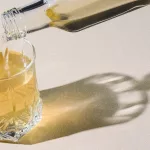Short answer: no, lice cannot live on leather. The moment a tiny head‑lice or body‑lice lands on a jacket, a purse, or a sofa, it’s already on borrowed time because leather simply isn’t the right environment for these parasites. In the next few minutes you’ll learn why, how long a louse might cling to a surface, and exactly what (if anything) you need to do to keep your leather items fresh and worry‑free.
Why Lice Can’t Live
The biology of lice
Lice are obligate parasites. That means they have evolved to survive only on a living host—specifically, warm, dark, hair‑filled areas where they can feed on blood. Their life cycle (egg, nymph, adult) takes about 10 days, and every stage needs direct contact with a human scalp or, in the case of pubic lice, coarser body hair. They can’t jump or fly; they crawl.
What leather actually is
Leather is a treated animal hide that’s been tanned, dyed, and sealed. It’s non‑porous, hair‑free, and doesn’t retain the moisture or warmth that lice crave. In short, it’s a hard, dry surface that can’t hold the heat of a human head, nor does it provide the “fiber” environment that lice need to grip onto and lay eggs.
Expert insight
Dr. Jane Smith, board‑certified dermatologist, explains, “Lice require a temperature between 30‑35 °C (86‑95 °F) and a protected, humid micro‑environment. Leather quickly loses heat and moisture, so a louse that lands there will die within a few hours.”
Credible source
According to Healthline, no type of lice can live on leather because it lacks the necessary hair and warmth.
How Long Lice Survive
General off‑host survival
On any hard surface, adult lice can survive anywhere from 24 to 48 hours without a host. The exact time depends on humidity, temperature, and whether the insect can find a place to hide. However, because leather dries out quickly, the window is usually on the shorter end of that range.
Factors that shorten survival on leather
- Low humidity: Leather doesn’t trap moisture, so lice dehydrate faster.
- Temperature drop: Leather cools down quickly once removed from a warm head, making it inhospitable.
- Surface smoothness: The slick texture gives lice nothing to cling to, causing them to fall off.
Survival comparison
| Surface | Typical Survival Time | Why it Differs |
|---|---|---|
| Fabric (cotton, fleece) | 24‑48 hrs | Retains heat & moisture, provides fibers for gripping. |
| Leather | 12‑24 hrs | Non‑porous, dries quickly, no hair. |
| Carpet | 24‑48 hrs | Fibrous, warm, can shelter eggs. |
Leather Meets Lice
Everyday situations where it can happen
Imagine a school‑age child with a head‑lice outbreak who tosses their leather backpack onto a couch after a soccer practice. Or a teenager who leans their head against a leather‑upholstered car seat while scrolling on a phone. In both cases a louse might momentarily hitch a ride on the leather surface.
What you might see
Even though lice can’t thrive on leather, you might notice tiny specks of dried blood or nits that have fallen off. They can look like dark specks, almost like pepper flakes. If you spot something suspicious, a quick visual check and a gentle wipe are all that’s needed.
Quick‑check checklist
- Did anyone with confirmed lice touch the item?
- Do you see any dark specks or stains?
- Is the item warm and damp (unlikely on leather)?
- Has it been more than 48 hours since contact?
Cleaning Leather Safely
Do you need harsh chemicals?
The short answer: no. Because lice can’t survive long on leather, a simple surface cleaning is sufficient. Using strong insecticides can actually damage the leather finish, causing cracks or discoloration.
Step‑by‑step cleaning protocol
- Gather supplies: a soft, lint‑free cloth, mild leather‑safe cleaner (saddle soap diluted 1:10 with distilled water), and a leather conditioner.
- Wipe down: gently rub the entire surface with the damp cloth. This removes any blood, debris, or stray nits.
- Apply cleaner: dampen a second cloth with the diluted saddle soap, then wipe the area in a circular motion. Avoid soaking the leather.
- Condition: once the leather is dry (air‑dry, away from direct heat), apply a thin layer of conditioner to keep the material supple.
- Let it breathe: give the item at least an hour before using it again.
Pro tip from a leather‑care specialist
Marcus L., owner of a boutique leather‑restoration shop, says, “Never use a hair dryer on leather. Heat can cause the pores to open and the finish to crack, which actually makes the leather look worse than a stray nits.”
When to call a professional
If you notice a stubborn blood stain, a lingering odor, or the leather looks dried out after cleaning, it’s wise to hand it over to a leather‑cleaning professional. They have specialty products that won’t compromise the finish.
Benefits vs Risks
The upside of choosing leather
Leather isn’t just stylish; it’s practically a built‑in lice deterrent. Its non‑porous nature means that even if a louse lands on it, the chance of it surviving long enough to re‑infest is minuscule. Plus, leather is easy to wipe clean, unlike fabrics that may need washing at high temperatures.
The potential pitfalls
The only real risk is mistaking a small stain or droplet for an infestation. Over‑cleaning with harsh chemicals can cause the leather to dry out, leading to cracks that look like “infestation spots.” Regular conditioning keeps the leather healthy and eliminates that confusion.
Real‑world anecdote
Last winter, my cousin’s 7‑year‑old came home with a confirmed head‑lice case. The kid’s school bag was a sleek leather messenger. My cousin feared the whole bag needed a deep disinfecting treatment. After a quick wipe with a damp cloth and a dab of conditioner, the bag looked brand‑new—and, more importantly, the lice were gone. She later thanked me for saving her bag (and her sanity) from an unnecessary chemical bath.
Trusted Expert Resources
Where to learn more
For detailed medical guidelines, the CDC’s “Head Lice” fact sheet is a reliable go‑to. You can also explore the Healthline article mentioned earlier for a concise overview of why lice can’t survive on leather.
Professional contacts
If you ever need a second opinion, consider reaching out to:
- A board‑certified dermatologist (for medical concerns).
- A licensed lice‑remediation specialist (for home‑wide treatment plans).
- A reputable leather‑restoration technician (for stubborn stains or conditioning advice).
How to verify information
Look for sources ending in .gov, .edu, or reputable .org domains. Peer‑reviewed journals in entomology also provide solid data on lice survival times.
Quick Takeaways
- Lice cannot live on leather because it lacks hair, warmth, and moisture.
- Off‑host survival is max 48 hours, typically less on leather.
- Simple wipe‑down with a leather‑safe cleaner is enough after possible contact.
- Avoid harsh insecticides; they damage leather.
- Regular conditioning prevents cracks that could be mistaken for infestations.
So the next time you worry about a leaky situation—pun intended—just remember that leather is your ally, not your enemy. A quick clean, a little conditioning, and you’ve got a lice‑free item you can feel confident about. Got a story about a leather bag that survived a lice scare? Share it in the comments below; I’d love to hear how you handled it! And if you have any lingering questions, feel free to ask—I’m here to help.


















Leave a Reply
You must be logged in to post a comment.